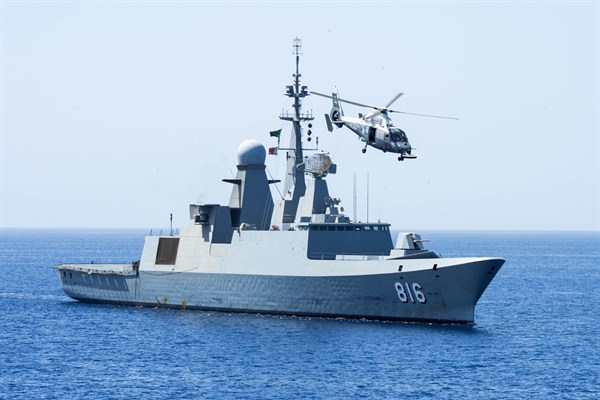A temporary truce between Houthi rebels in Yemen and the Saudi-led coalition against them, designed to allow humanitarian aid past Saudi Arabia’s naval blockade, was broken within hours earlier this month. In an email interview, Anthony Cordesman, the Arleigh A. Burke Chair in Strategy at the Center for Strategic and International Studies, discussed Saudi Arabia’s naval capabilities.
WPR: What are Saudi Arabia’s naval capabilities in terms of its fleet, its priorities and its operational readiness?
Anthony Cordesman: The Saudi navy is the largest of the Gulf Arab states with up to 15,000 men and 3,000 marines. It has three destroyers, four frigates, nine missile patrol boats, 56 six other patrol boats and eight landing craft, not to mention a naval aviation element divided between Red Sea and Persian Gulf fleets. Despite these assets, the Saudi navy faces serious challenges, including comparatively limited resources, modernization, mediocre combat readiness and inadequate maritime patrol and naval surveillance capabilities. These challenges represent significant hurdles in achieving Saudi Arabia’s maritime goals, first of which is to keep Gulf shipping lanes open for its lucrative petroleum market. Saudi Arabia has also prioritized countering Iranian asymmetric warfare, expressing an interest in submarines.

